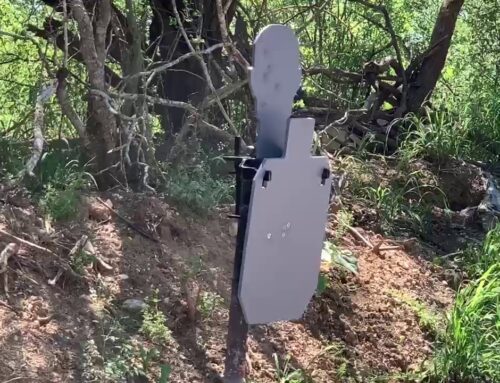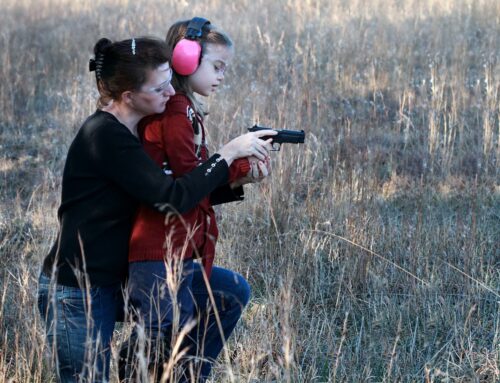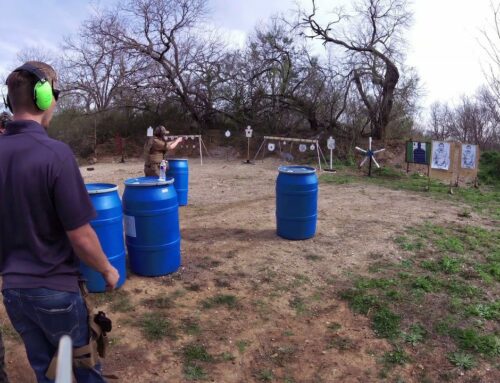Maybe you decided that you’re finally going to purchase a firearm, or maybe some friends talked you into going shooting with them. Maybe you just want to brush up on your shooting skills and haven’t been to a range in a long time.
Whatever the reason, you’re getting ready to go to an indoor shooting range. Before you go, make sure you understand what you’re about to do. Indoor shooting ranges are a lot of fun, but there are several things you should know before you go about safety and best practices that will make your experience better.
Remember the 4 Rules of Firearm Safety
The 4 rules of firearm safety are probably the most important thing to remember at an indoor shooting range – or, really anywhere you might have a firearm with you. If you remember the rules and practice them, your time at the range should go fairly smoothly.
Rule #1: ALWAYS treat your firearm as if it is LOADED
Always, always, always treat every firearm as though it is loaded. It doesn’t matter if you can see that there’s no ammo inside the firearm. If you pick up a firearm, assume it is loaded. Go ahead and check to see if the firearm is loaded when you pick it up – but even after you’ve checked and found the chamber empty, still treat it like it is loaded.
Treating firearms like they’re loaded helps you be more cautious with them than you might be otherwise. If you assume that the firearm you just picked up could injure or kill someone, you’ll do your best to prevent anything like that happening.
Don’t even joke around when you know that the firearm isn’t loaded. Seriously, no one will find it funny. And joking around like that is what leads to tragic accidents, so take this rule seriously no matter what.
Rule #2: ALWAYS point your firearm in a SAFE DIRECTION
Always watch where your firearm is pointed. At an indoor shooting range, or really any shooting range, always keep the firearm pointing downrange where the targets are.
Again, this is a serious safety rule because if, for some reason, you do forget to check if a firearm is loaded or you accidentally misfire after loading, then it’s less likely that someone will get hurt. Keep the firearm pointing away from people, from vehicles, from anything that you don’t want to shoot at.
This includes not turning around to talk to someone behind you at the range while holding your firearm. It includes loading and unloading the firearm. It includes taking the firearm out of its case. No matter what you’re doing, keep the firearm pointed downrange at all times.
Rule #3: ALWAYS keep your finger off the TRIGGER
It’s easy to let your finger rest against the trigger when you hold the firearm, but if you do that and squeeze the trigger without meaning to, someone could be seriously injured. So do your best to build the habit of keeping your finger off the trigger until you are aiming at your target and ready to shoot.
The best practice is to hold your trigger finger against the side of the firearm. If you just try to hold your finger in the air, there’s a good chance it will end up on the trigger. But if you give it a place to rest, you’re less likely to move it onto the trigger.
Rule #4: ALWAYS know your target and what is BEYOND IT
At an indoor shooting range, it should be pretty clear what you’re supposed to shoot at – it’s the target you hang up on your lane. Most of the time, the only other thing that should be around your target at an indoor range is other targets for other lanes. But never assume that nothing or no one else is nearby your target.
Sometimes ranges have times when the range is “cold,” or in other words, no one is allowed to be shooting. This allows people to walk downrange and adjust their targets, fix the hanging mechanism, and clean. So make sure you know if it’s okay to shoot or not, and also make sure that you didn’t miss seeing someone downrange.
If you’re at an outdoor shooting range, hunting, or working in law enforcement, it may not be as clear what your target is or if it’s safe to shoot, so this rule is even more important outside of an indoor shooting range. But it still needs to be remembered in the shooting range as well.
Carry Your Firearm in a Case and Unloaded
Now that you know the 4 rules of firearm safety, here’s another rule to follow at an indoor shooting range and everywhere you take your firearm – carry your firearm in a case. Even when you’re walking into a range, it is not acceptable to show up carrying your firearm without a case. It poses a safety hazard and looks like a threat, so anyone nearby would be justified in calling the cops. For your own sake (and the safety of everyone around you), carry your firearm in a case. It’s also important to carry the firearm unloaded. This keeps you and others around you safe in case the firearm gets bumped around – without ammo, it can’t misfire and hurt someone. It’s better to load the firearm after you arrive at the indoor shooting range.
Always Follow Range Rules
One more mention of rules – Every indoor shooting range has a list of rules that shooters are required to follow. There are also age restrictions and state laws that apply to shooters as well. These rules help everyone to stay safe, so they need to be observed. Ensure you understand them prior to visiting the range and of course before you begin to shoot. Indoor shooting ranges typically have more rules than outdoor ranges because there can be a bit more risk.
Some common rules you’ll find are:
- Required eye and ear protection
- Don’t pass the firing line (the line where everyone stands and fires from)
- Only load your firearm at the firing line
- Don’t draw from a holster and fire
- No pregnant women on the range (the loud noise can be dangerous)
Range Safety Officers
Whatever they instruct you to do, please adhere to. It’s their job to keep everyone safe, so when they tell you to do something, it’s usually because you’re not following one of the set rules.
Thank you and live confidently.






